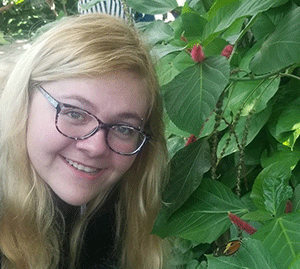
The Scene staff
When I first heard about coronavirus, I didn’t take it seriously. I traveled to New York City in March, before the respiratory illness was declared a pandemic.
There were no travel restrictions or “shelter-in-place” orders at the time. Restaurants, bars and other businesses were operating as usual.
Three days later, state and local officials shut down Broadway. That kept me from going to see “The Book of Mormon,” but honestly, I didn’t care. I was beyond excited, just to be in New York for the first time.
I walked all over the city, along with thousands of other people. I was living my best life. I didn’t account for the bombshell that would be waiting for me back in St. Louis.
I work as a “clinical partner” at a local hospital. My job is to take patients’ vitals (blood pressure, temperature, respirations, oxygen saturation and pulse), feed them if they are unable to do it themselves, dress them, keep up their personal hygiene, draw blood and otherwise help patients and nurses.
When I returned from New York, my shift had changed, and there were new rules at work. Visiting hours had been reduced. The hospital’s front doors were locked, and only employees could enter by scanning their badges.
When my employer found out that I had mild cold symptoms and I had been to New York (by then a COVID-19 “hotspot”), I was told that I couldn’t work for 14 days.
I went home, called a coronavirus hotline and answered what seem like a million questions: “Have you traveled out of the country in the last year?” “What is your occupation?” “Do you have any health conditions such as diabetes or heart problems?”
After a couple of days at home, I was already losing my mind. I had cabin fever. To keep busy, I cooked, watched TV shows and talked to people on the phone who I hadn’t talked to in a long time.
Then my boss texted and told me to contact an employee health representative. By this time, I had developed a runny nose, tooth pain that came and went and trouble sleeping.
The representative directed me to a website to determine if I needed to be tested for COVID-19 (www.ssmhealth.com/covid19). I answered another set of questions, prompting a nurse practitioner to call. Turns out, I qualified for a test.
Then another lady called and scheduled an appointment for later that day, March 25, my niece’s birthday. My mom starting crying. It was super dramatic.
The test was scheduled for 3:40 p.m. at St. Joseph’s Hospital in St. Charles, about 25 minutes from my house. When I arrived, it was like a ghost town. There were no cars, only a white tent in the middle of the parking lot.
I pulled up and drove through the tent. I was greeted by this sweet lady wearing a mask and yellow gown. She had beautiful blue eyes. She asked to see my identification and looked at it for about two seconds.
The test was prepackaged and ready to go. The lady handed me tissues and told me I might get a runny nose or start sneezing or coughing afterward.
A coronavirus test involves having the inside of your nose swabbed with what looks like a long Q-tip. It goes all the way to the back of your nose and further. I felt like it penetrated my soul. It was such a weird feeling. It took only a few seconds.
I was at St. Joseph’s for maybe 10 minutes total. Waiting on the results was probably the worst part of the whole experience. I hated being trapped in the house, unable to go out and do anything.
Finally on April 1, I got my results in the mail. I tested negative for coronavirus, and now I’m back to work. Finally, I’m free from prison.
